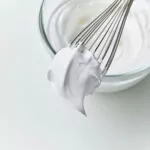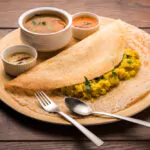Flavorful & Nutritious Recipes for Navratri Fast
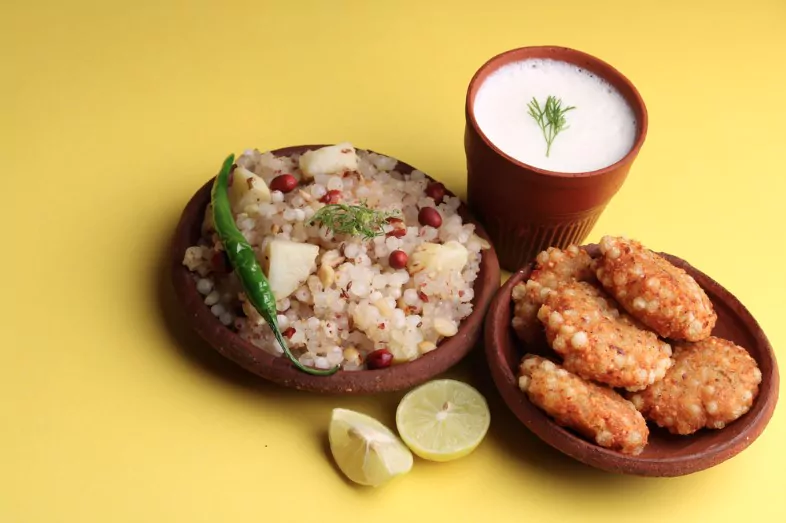
Navratri, a nine-day festival revered by millions, is marked by vibrant devotion, color, and festivity, where the goddess Durga is worshipped in her various avatars. The Navratri fast or ‘Navratri Vrat’ is a significant aspect of this festival. People adhere to specific ‘vrat ka khana’ or fasting recipes during this period, focusing on purity in culinary delights, as well as offering sweets to Devi Maa. This festive season, let’s take a culinary journey through various Navratri Vrat recipes that encompass ingredients such as water chestnut flour, buckwheat flour, and rock salt or sendha namak, holding immense significance during the fasting season.
- List of Navratri Fast Recipes
- Sabudana Vada with Coconut Chutney
- Kuttu Ki Puri with Aloo Ki Sabzi
- Fruit Chaat with a Twist
- Sweet Potato Kheer
- Barnyard Millet (Vrat Ke Chawal) Pulao
- Singhare ka Atta Pancakes
- Amaranth Flour (Rajgira ka Atta) Roti
- Lemon Rice with Curry Leaves
- Grated Paneer and Cucumber Salad
- Arrowroot Flour Halwa
- Bottle Gourd (Lauki) Juice
- Purple Yam (Ratalu) Chaat
- Reflections on Navratri Fasting and its Significance
- Culinary Diversity and Unity
- Wrapping Up
1 List of Navratri Fast Recipes
Sabudana Vada with Coconut Chutney
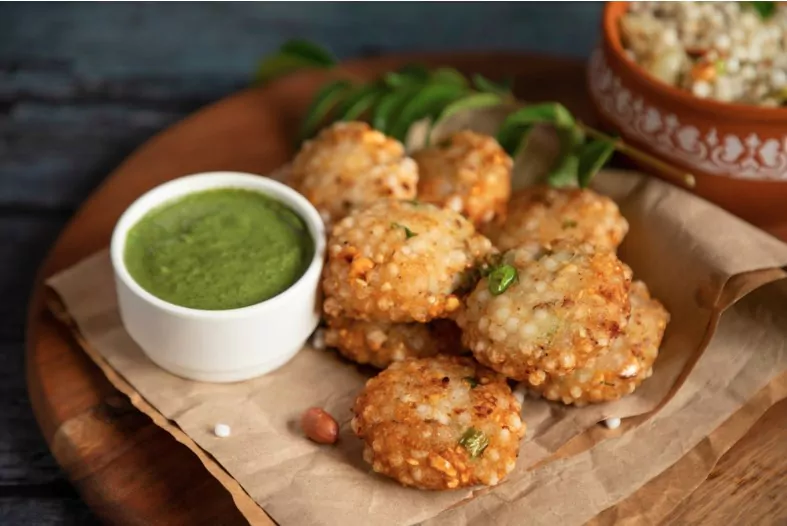
Sabudana, a staple in fasting recipes, when paired with coconut chutney, becomes a perfect accompaniment for the Navratri vrat. This dish is crisp, flavorful, and a favorite across North and South India. Here, we also add potatoes, cumin seeds, green chilies, and sendha namak to enhance its taste, making it a must-have Navratri recipe.
Kuttu Ki Puri with Aloo Ki Sabzi
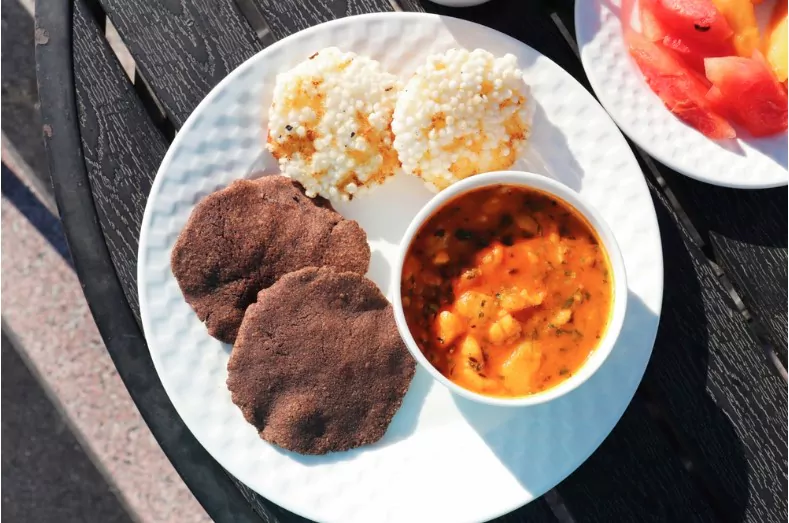
Buckwheat flour or kuttu ka atta is quintessential during Navratri fasting. When this flour is used to make puri, it is usually paired with aloo ki sabzi, making it one of the most sought-after Navratri vrat recipes. The puris are deep-fried in ghee, and the sabzi is a sublime concoction of potatoes, cumin powder, and dry pomegranate seeds.
Fruit Chaat with a Twist
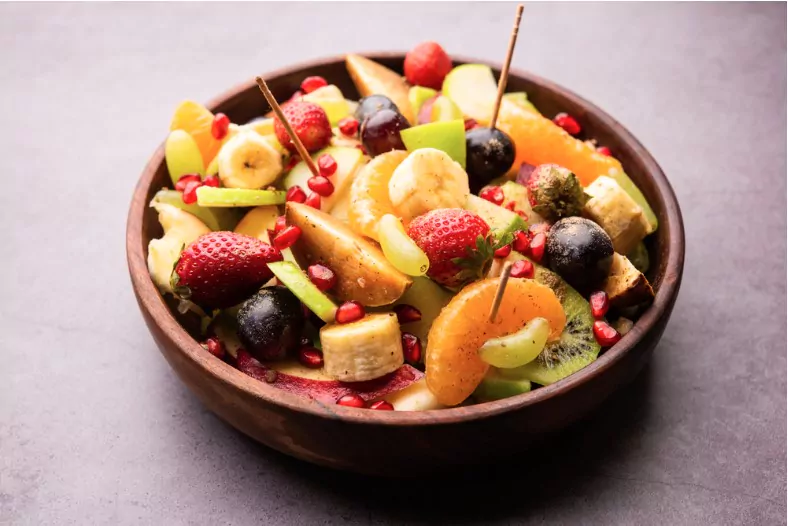
The freshness of fruit salad or chaat masala resonates with Navratri’s purity. The mix of sweet potatoes, apples, bananas, and pomegranate seeds with a sprinkle of lemon juice and chaat masala makes this dish a refreshing snack during the fasting days.
Sweet Potato Kheer
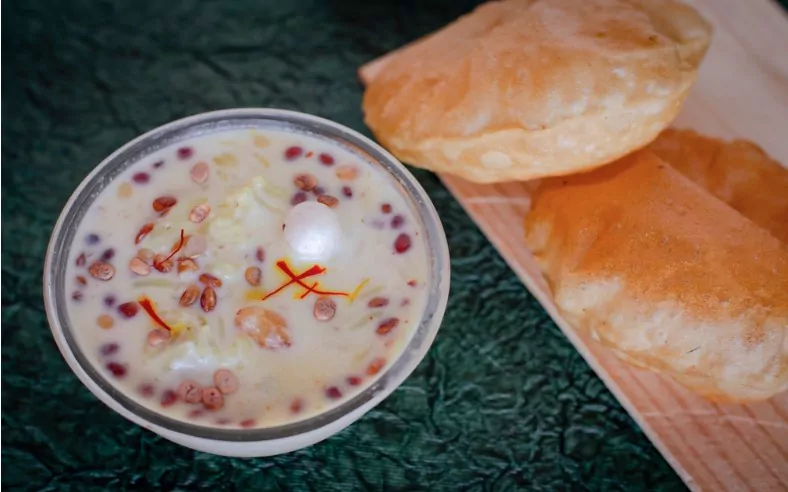
Sweet potato is another beloved ingredient in fasting recipes. A kheer made from sweet potato, milk, and cardamom powder, and garnished with chopped nuts becomes a delightful Indian sweet, perfect for Navratri Vrat.
Barnyard Millet (Vrat Ke Chawal) Pulao
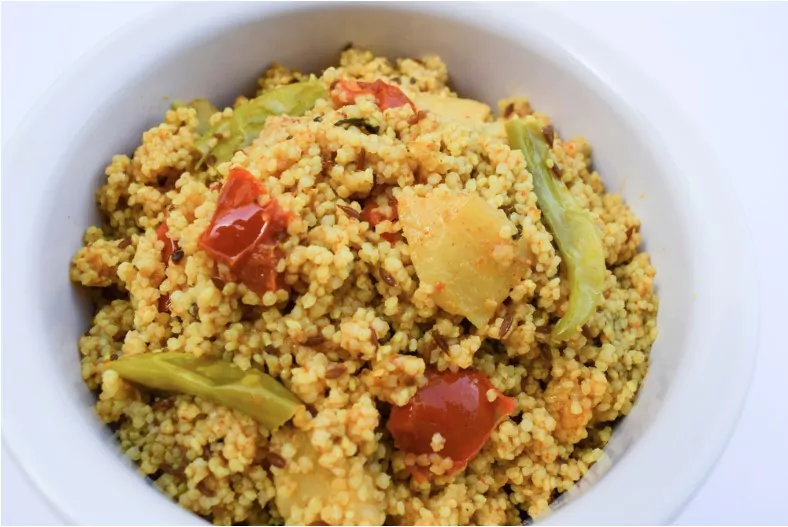
Barnyard millet or ‘vrat ke chawal’ is a common substitute for rice during Navratri fasts. This pulao, enhanced with cumin seeds, green cardamom, and assorted vegetables, serves as a nutritious and tasty dish for those observing the fast.
Singhare ka Atta Pancakes
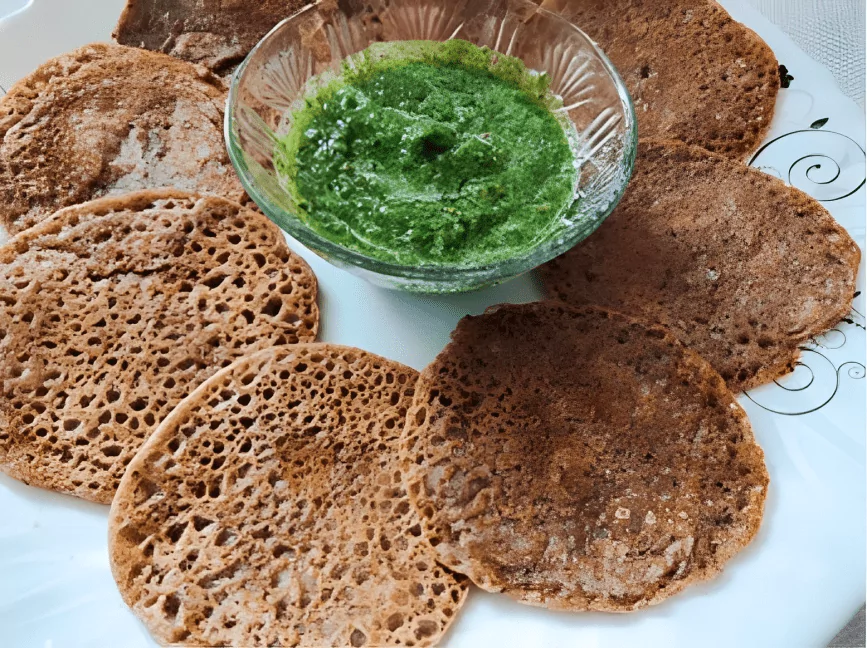
Water chestnut flour or singhare ka atta is a pivotal element in vrat recipes. Pancakes made with this flour served with a dollop of curd or cucumber raita, are a heavenly and filling option during the Navratri fast.
Amaranth Flour (Rajgira ka Atta) Roti
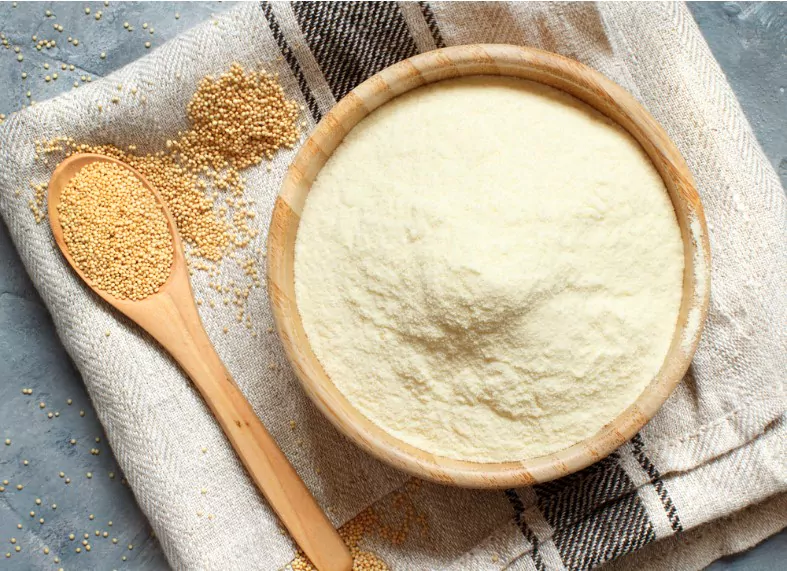
Amaranth flour or rajgira ka atta is another staple ingredient in vrat ka khana. The roti made from this flour is soft, nutritious, and a viable alternative to the usual wheat flour roti, resonating with the essence of Navratri recipes.
Lemon Rice with Curry Leaves
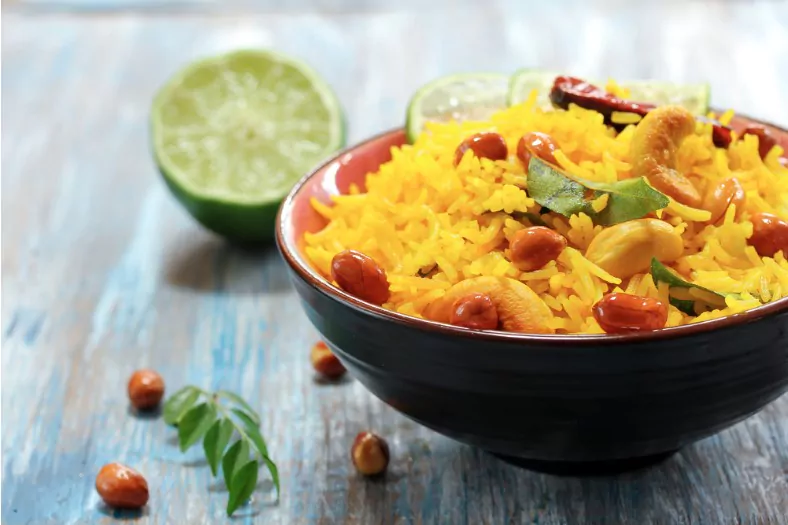
While many North Indians relish dishes made from kuttu ka atta, South Indians find solace in flavorful lemon rice during Navratri vrat. The tanginess of lemon juice and the aroma of curry leaves make this dish a desirable alternative to regular rice dishes during fasting.
Grated Paneer and Cucumber Salad
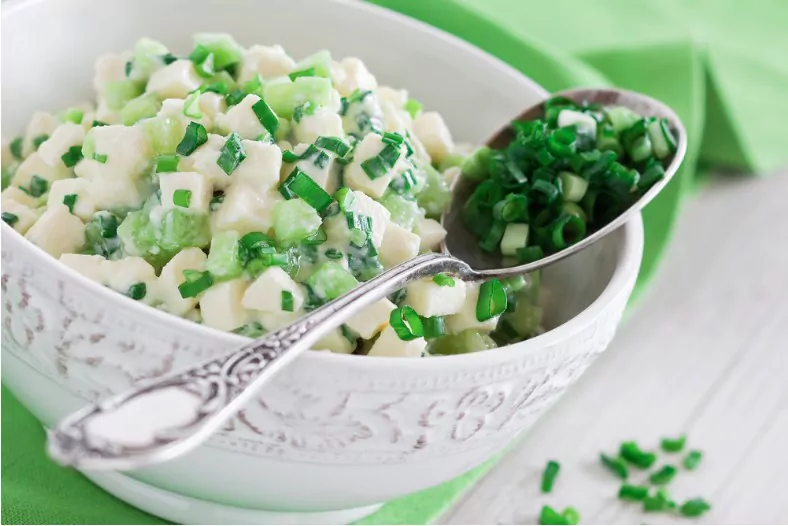
Grated paneer mixed with cucumbers, green chilies, and lemon juice is a healthy and light option during fasting days, making it a popular Navratri vrat recipe.
Arrowroot Flour Halwa
Arrowroot flour is used in various vrat recipes due to its lightness and nutritional value. A halwa made from this flour with ghee, milk, and green cardamom is a sumptuous Indian sweet, relished by many during Navratri fasts.
Bottle Gourd (Lauki) Juice
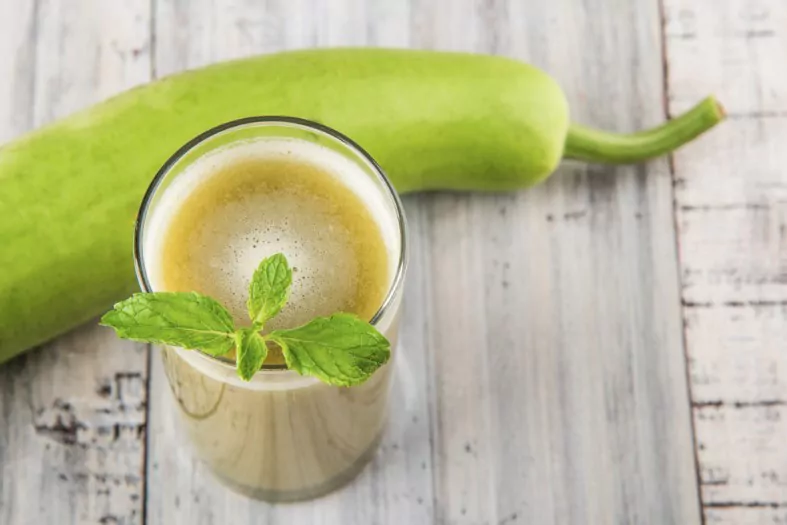
Bottle gourd juice is a hydrating and nutritious drink perfect for the fasting season. The natural sweetness of bottle gourd combined with a hint of lemon juice provides a refreshing touch during the Navratri vrat.
Purple Yam (Ratalu) Chaat
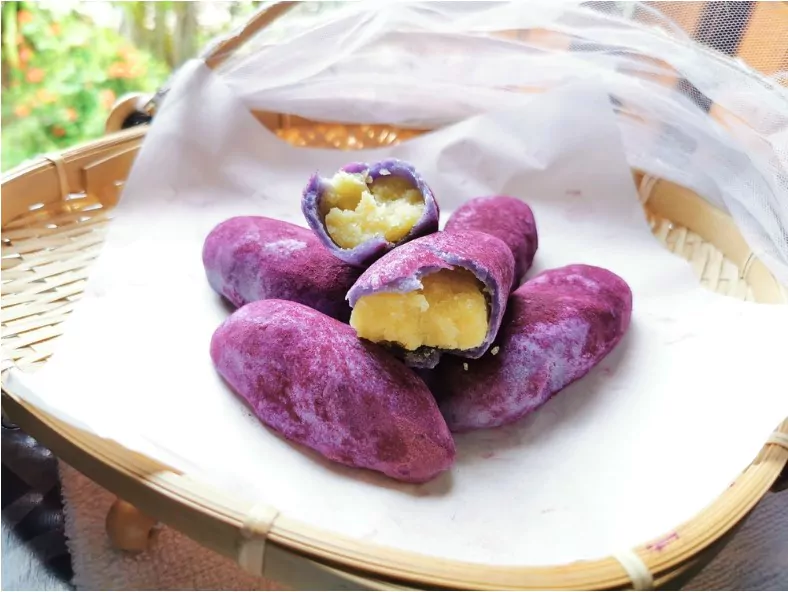
Purple yam is a versatile and nutritious ingredient, which, when mixed with chaat masala and lemon juice, results in a delectable chaat that is a delightful addition to Navratri recipes.
2 Reflections on Navratri Fasting and its Significance
Navratri fasting or ‘vrat’ is not merely about abstaining from regular food items or non-vegetarian food but is also a spiritual journey that connects devotees to Goddess Durga. The fasting rules signify devotion, discipline, and purification of the soul as people pay homage to the goddess.
The nine days of Navratri represent the nine avatars of Goddess Durga, each day symbolizing a different form of the goddess who vanquished the demon Mahishasura. Devotees offer sweets, fruits, and special vrat ka khana to appease Devi Maa and seek her blessings.
The meticulous selection of ingredients like kuttu ka atta, rock salt, amaranth flour, and water chestnut flour align with the sanctity of Navratri vrat. The use of sendha namak instead of regular salt is another manifestation of purity associated with vrat recipes.
3 Culinary Diversity and Unity
Navratri recipes reflect the rich culinary tapestry of India, showcasing the varied tastes and preferences from North to South India. Whether it is the spicy Sabu dana vada loved by people in the north or the tangy lemon rice preferred by south Indians, the Navratri vrat unifies diverse culinary traditions.
Navratri vrat recipes, enriched with a plethora of flavors, textures, and aromas, represent the gastronomical diversity of India in the same way Durga Puja exemplifies cultural and spiritual unity. From the tempting kuttu ki puri to the refreshing fruit chaat, every dish speaks volumes about India’s culinary heritage.
4 Wrapping Up
Navratri, a festival of immense devotion and vibrancy, is celebrated with a plethora of dishes that not only adhere to the fasting rules but also offer a delightful culinary experience. The recipes for Navratri fast underscore the significance of purity and devotion, utilizing ingredients like buckwheat flour, water chestnut flour, rock salt, and various nutritious vegetables and fruits.
Every dish, whether it is the mouth-watering aloo ki sabzi or the refreshing cucumber raita, reflects the rich culinary diversity of India, bringing forth flavors from the north and south, offering a sumptuous and spiritual journey during the Navratri vrat season.
So, this Navratri, immerse yourself in devotion, embrace the sanctity of the festival, and relish the divine flavors of vrat.
Community Q&A
About This Article
This article has been viewed 213 times.


